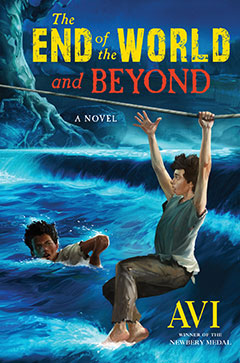From a writers’ point of view, I have been blessed insofar as I’ve never really been at a loss for ideas for my novels. That said, it has gotten me into trouble because, in truth, they are good but sometimes half-baked ideas. In my enthusiasm I pitch these ideas to publishers, who grab hold. Then I have to give good literary life to those ill-formed notions. So far, so good.
When I first suggested my idea for the story of Oliver Cromwell Pitts (at that point unnamed) to my editor at Algonquin, to the best of my recollection the basic idea was to tell the tale of a kid in early 18th Century England who gets caught up in Britain’s horrendous legal system and is transported (by way of punishment) to the American colonies. This was accepted, with the proposal that I write a TWO-book story. You may learn of the evolution of the book in the blog I posted here on February 27, 2018.
What I did not relate in that posting was a vital fact. Somewhere in the course of writing “Pitts 1,” as we came to call it, I got it into my head that this was to be a THREE book series. So, I sent in the first book, which ended (in that iteration) when Oliver discovers his beloved sister is a common pickpocket.
In turn, the editor kindly referred me to my contract, which I surely had read and signed, that stated quite clearly that this was to be a TWO-book project.

Did it matter? Well yes. Speaking for myself, having written for many years, I have developed an inner sense of how long a book needs to be, and thereby pace the text accordingly. I was brought up short that this book was, well, short. I needed it to be a fair bit longer. Moreover, at that point I had not fully thought out how this book should end.
Back to work.
To put it metaphorically, it was as if I had decided to climb a mountain, only to discover (as I hiked) that the mountain had two summits, the second one the real summit, and much higher. You get to the first summit, breathe a sigh of relief and relax. Then you notice you haven’t truly gotten to the top. That’s common enough here in the Rocky Mountains where I live, but not in my literary life, where I work.
 I got back to the book. It proved to have one big advantage. I now needed to think firmly how the second book’s plot would evolve. In this fashion book one and two were effectively blended. I think one might read the two books back-to-back, and not miss a beat. In fact, if a writer’s view is to be considered, the full story of Oliver Cromwell Pitt’s life (The Unexpected life of Oliver Cromwell Pitts, and The End of the World and Beyond), is much more entertaining to read, if you read them one right after the other.
I got back to the book. It proved to have one big advantage. I now needed to think firmly how the second book’s plot would evolve. In this fashion book one and two were effectively blended. I think one might read the two books back-to-back, and not miss a beat. In fact, if a writer’s view is to be considered, the full story of Oliver Cromwell Pitt’s life (The Unexpected life of Oliver Cromwell Pitts, and The End of the World and Beyond), is much more entertaining to read, if you read them one right after the other.
And I should read my publishing contracts—carefully.